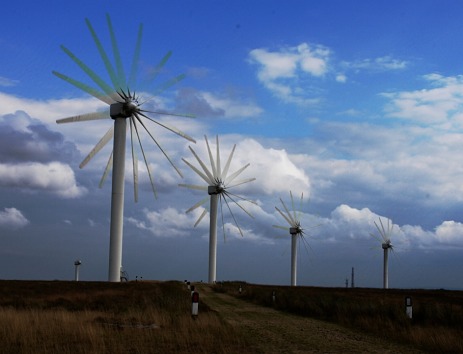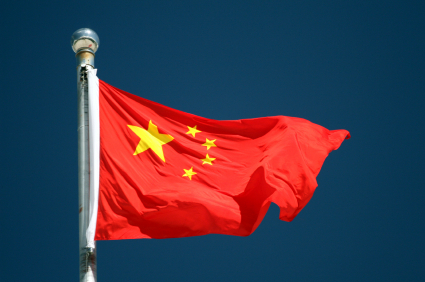![]() Chinese President Hu Jintao is in D.C. for a state dinner with President Obama and for a series of meetings over the next three days. They have a lot on their plate (both literally and figuratively), so climate change won’t be the only thing that they discuss. But you can sure bet that it will come up. There are also many parallel energy/climate events occurring in D.C. while he is here. Significant progress was made in Cancun on key issues that both countries outlined as critical components of their vision of success for that meeting. The meetings between the two countries over the next three days are an important opportunity to continue to detail five key components of the international response to global warming.
Chinese President Hu Jintao is in D.C. for a state dinner with President Obama and for a series of meetings over the next three days. They have a lot on their plate (both literally and figuratively), so climate change won’t be the only thing that they discuss. But you can sure bet that it will come up. There are also many parallel energy/climate events occurring in D.C. while he is here. Significant progress was made in Cancun on key issues that both countries outlined as critical components of their vision of success for that meeting. The meetings between the two countries over the next three days are an important opportunity to continue to detail five key components of the international response to global warming.
1. Continuing to find solutions — not shouting, but negotiating
The U.S. and China struck a different tone in Cancun compared to Copenhagen. They sat down and discussed in rationale ways the details of each other’s visions for certain issues. They negotiated (you can bet that it wasn’t all agreement behind closed doors as both sides are tough negotiators). And they found a way to meet both countries interests — to a large extent — while still beginning to build an international system for addressing global warming that will encourage countries to take action at home, ensure that countries are living up to their commitments, and deliver the needed assistance to help developing countries reduce emissions and adapt to the impacts of climate change.
This dynamic was clearly evident in how the two sides approached the difficult issue of “transparency and accountability.” They’ll need this new tone to continue as further details are needed on the transparency and accountability provisions of the Cancun Agreements (as I discuss below) and on other key issues between the two sides. When President Obama and President Hu Jintao sit down and discuss climate change they can continue to reinforce this new tone of finding solutions, not shouting.
2. Reducing emissions — how are you doing at home?
As I’ve continued to stress, one of the ultimate measures of success of the international agreement must be around whether countries are taking the necessary concrete steps at home to reduce their emissions. And no two countries are as critical in this effort as the U.S. and China as they account for over 40 percent of the world’s carbon pollution.
As my colleague outlined, Chinese officials are taking stock of the progress that China has made on its energy and climate goals between 2005 and 2010 (the 11th Five Year Plan timeline) and signaling that there will be expanded efforts on these issues in the 12th Five-Year Plan (2011-2015). The U.S. continues to use its existing tools to reduce pollution, despite continuous efforts to block EPA from updating Clean Air Act safeguards with new standards to reduce emissions of life-threatening pollution from power plants and other major sources. And places like California continue to move forward with their efforts to reduce carbon pollution.
When they meet both presidents will need to ask each other: “so how is it going?”
3. Transparency and accountability — adding further flesh to the agreement
One of the key issues in Cancun was how to create a stronger system of transparency and accountability. This was a particularly contentious issue between the U.S. and China. But with very important contributions from Indian Minister Ramesh both the U.S. and China came out of Cancun with a system which will provide the necessary data, information, reporting, and scrutiny to keep a spotlight on whether countries are making the necessary progress towards their commitments.
This agreement in Cancun was critical to success. So going into the next meeting in Durban, South Africa it is essential that this agreement is quickly translated into operative detailed guidelines that “give further flesh” to this agreement. In a new report, we’ve outline a set of recommendations for adding the necessary details to this system which the two countries can build upon as they detail the guidelines.
4. Clean energy cooperation — continuing to convert MOUs to tangible actions on the ground
As my colleague discussed, the U.S. and China have steadily moved forward in the past year in their commitment to implement an ambitious energy and climate cooperation agenda between the two countries. And while President Hu Jintao is in D.C., there will be further meetings between the two countries to continue to implement these cooperative efforts. NRDC will be a part of some of these efforts as we are a partner in the buildings effort of the U.S.-China Clean Energy Research Center.
Continuing these promising efforts is essential for international efforts to address global warming. Both countries and the world have a lot to gain from efforts to deploy clean energy in these two major energy consuming countries. Progress in speeding up the deployment of low-carbon technologies in these two countries will dramatically change the economics and scale of deployment of clean energy throughout the world. All of which will make it much more likely that countries will invest in the clean energy technologies of the future rather than the dirty technologies of the past.
5. Building clean energy “centers” in developing countries — building upon the U.S.-China example (and India)
One of the key innovations of the new U.S.-China partnership on clean energy was the creation of U.S.-China Clean Energy Research Centers (there is a similar effort in India called the U.S.-India Partnership to Advance Clean Energy). These efforts bring together key governments, researchers, academics, companies, and non-governmental organizations to implement aggressive collaborative efforts to deploy clean energy opportunities in the China, India, and the U.S. They help focus and mobilize both public and private funding, bring together the best expertise in these countries, and catalyze real action on the ground.
As a part of the Cancun Agreements, countries agreed to the creation of Climate Technology Centers and Networks. In the lead-in to Durban, South Africa countries will be implementing the details of how these “centers” would operate in order to help developing countries speed up the deployment of clean energy technologies. The U.S.-China (and U.S.-India) centers could provide valuable lessons for how these should work as these partnerships have proven that such centers can be developed. In fact we’ve been very pleased with the progress of the one where we are a partner
— building energy efficiency.
——————–
So while global warming and clean energy won’t be the main issue between the two countries when President Hu Jintao and President Obama meet in D.C., both countries will still need to use this opportunity to continue to forge ahead on tangible steps to help the world reduce global warming. After all, these are steps that are in the interest of both countries.




